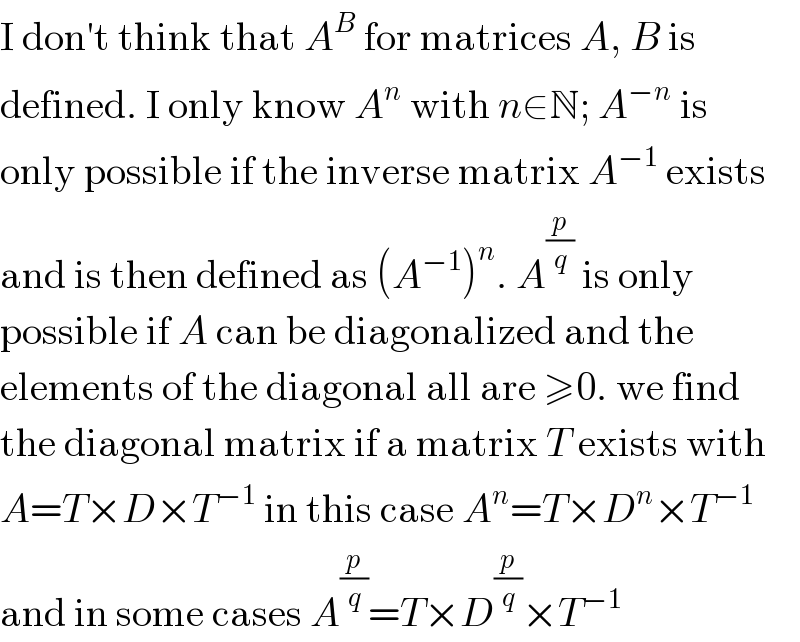
Question and Answers Forum
Previous in Matrices and Determinants Next in Matrices and Determinants
Question Number 77565 by TawaTawa last updated on 07/Jan/20

Commented by MJS last updated on 07/Jan/20

Commented by TawaTawa last updated on 07/Jan/20

Commented by TawaTawa last updated on 08/Jan/20

Commented by TawaTawa last updated on 08/Jan/20
![[((7 − 3)),((10 −4)) ]^ determinant (((0 1)),((3 −2)))](Q77611.png)
Commented by MJS last updated on 08/Jan/20
![det determinant ((0,1),(3,(−2)))=−3 [(7,(−3)),((10),(−4)) ]^(−1) = [((−2),(3/2)),((−5),(7/2)) ] [((−2),(3/2)),((−5),(7/2)) ]^3 = [((−17/4),(21/8)),((−35/4),(43/8)) ]](Q77636.png)
Commented by TawaTawa last updated on 08/Jan/20

